Loading
Archives of Gastroenterology Research
ISSN: 2692-5427
Most Cited Articles
DILI, HILI, RUCAM Algorithm, and AI, the Artificial Intelligence: Provocative issues, Progress, and Proposals
Rolf Teschke
Artificial Intelligence (AI) principles published in 1956 included the recommendation to use algorithms for solving complex processes. The creation of the Roussel Uclaf Causality Assessment Method (RUCAM) was published in 1993 with integration of an intelligent algorithm to solve issues of causality assessment in cases of complex suspected drug induced liver injury (DILI) cases. Other causality assessment methods (CAMs) published before the era of AI and RUCAM followed rather general principles without precise and valid algorithm.
Arch Gastroenterol Res, 2020, Volume 1, Issue 1, p4-11 | DOI: 10.33696/Gastroenterology.1.002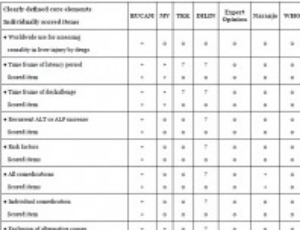
Alcoholic Liver Disease and the co-triggering Role of MEOS with Its CYP 2E1 Catalytic Cycle and ROS
Rolf Teschke, Manuela G. Neuman, Suthat Liangpunsakul, Helmut-Karl Seitz
Until the early sixties, the concept prevailed that alcoholic liver disease (ALD), also termed alcohol-related liver disease (ARLD), results from malnutrition commonly observed among individuals consuming chronically high amounts of alcohol rather than being causally related to the use of alcoholic beverages. However, the malnutrition concept became a matter of debate because of the clinical observation that humans, even on a normal diet and without signs of underweight or malnutrition
Arch Gastroenterol Res, 2021, Volume 2, Issue 1, p9-25 | DOI: 10.33696/Gastroenterology.2.022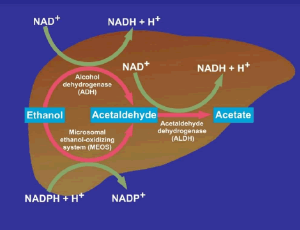
Preclinical Promise and Clinical Challenges for Innovative Therapies Targeting Liver Fibrogenesis
Tamer A. Addissouky, Majeed M. A. Ali, Ibrahim El Tantawy El Sayed, Yuliang Wang, Ayman El Baz, Naglaa Elarabany, Ahmed A. Khalil
Liver fibrosis resulting from chronic liver injury can progress to cirrhosis and liver failure. Current treatments are limited, creating an urgent need for novel antifibrotic therapies. Multiple emerging approaches have shown preclinical promise in inhibiting liver fibrogenesis or stimulating regeneration, including artificial liver support, stem cell therapy, cell/gene therapy, nanomedicines, immunotherapy, and herbal medicines.
Arch Gastroenterol Res, 2023, Volume 4, Issue 1, p14-23 | DOI: 10.33696/Gastroenterology.4.044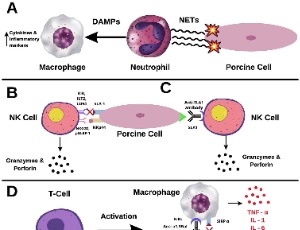
New Trends in Interrelation of Infectious Colorectal Cancer with Intestinal Microbiota
Vishnu P. Tripathi, Daniel Goo, Bokyo N Maidya, M K Aneebuddin
The intestinal microbiota creates a bodily barrier for invading pathogen by using aggressive exclusion. Pathogens and immune cells can interact directly and dynamically with symbiotic bacteria, determining the pathophysiology and outcome of an infection. They can defend the host through a variety of processes, including attachment site occupancy, nutrition intake, metabolite competition, and the synthesis of antimicrobial compounds including bacteriocins that influence pathogen survival (a process referred to as colonization resistance).
Arch Gastroenterol Res, 2022, Volume 3, Issue 1, p18-22 | DOI: 10.33696/Gastroenterology.3.038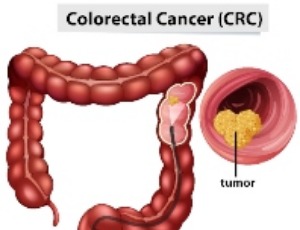
Elucidating the Role of Chemokines in Infectious Diseases and Gastric Cancer
Vishnu P. Tripathi, Haamza Ahmed, Naidia Renulos, M K Aneebuddin
Although the prevalence of gastric cancer is decreasing in many developed nations, it is the fourth most prevalent cancer and the second leading cause of cancer-related deaths globally. Around 8 percent of recently diagnosed malignant tumors are stomach cancer, more than 7,00,000 individuals die from gastric cancer yearly. Despite extensive research into new diagnostic and therapeutic methods, the prognosis for individuals with advanced stomach cancer remains dismal, and survival rates have hardly improved. In recent years, many latest innovations have improved our understanding of the molecular mechanisms and modifications that contribute to gastric cancer’s beginning and progression, including several genetic and molecular modifications and mutations.
Arch Gastroenterol Res, 2022, Volume 3, Issue 1, p23-26 | DOI: 10.33696/Gastroenterology.3.039
Gastric Cancer: A Brief Review, from Risk Factors to Treatment
Beatriz Rocha Cuzzuol, Elise Santos Vieira, Glauber Rocha Lima Araújo, Jonathan Santos Apolonio, Lorena Sousa de Carvalho, Ronaldo Teixeira da Silva Junior, Breno Bittencourt de Brito, Fabrício Freire de Melo
Gastric cancer (GC), also known as stomach cancer, is a worldwide health problem. Anatomically, it can occur from the gastroesophageal junction to distal portions of the stomach. Considering both sexes, worldwide, it is the 5th most common neoplasm (5.7%) and the 3rd cause of mortality among malignancies, leading to approximately 782,000 deaths in 2018. The incidence varies geographically but 50% of new cases are diagnosed in developed countries. High incidence is observed in Asia, Latin America, and in the central and eastern parts of Europe. There are several ways to classify GC, but the most used is Lauren’s Classification, which proposes two main histological groups: intestinal and diffuse. This classification is important because there are marked etiological, pathological, and epidemiological differences between the subgroups, guiding the clinical approach for each patient.
Arch Gastroenterol Res, 2020, Volume 1, Issue 2, p34-39 | DOI: 10.33696/Gastroenterology.1.008
Advances in Functionalized Hybrid Biopolymer Augmented Lipid-based Systems: A Spotlight on Their Role in Design of Gastro Retentive Delivery Systems
Pratap Basim, Shashank Gorityala, Mallesh Kurakula
Biopolymers have earmarked their importance in the biomedical and pharmaceutical applications. Researchers are still working for the facilitation of better therapeutic effects and medical benefits. In this context, several strategies are on a play like functionalization of biopolymers with physicochemical modification, functionalization of lipids with biopolymers, development of composites or hybrid systems for bringing together the benefits of individual moieties/systems
Arch Gastroenterol Res, 2021, Volume 2, Issue 1, p35-47 | DOI: 10.33696/Gastroenterology.2.025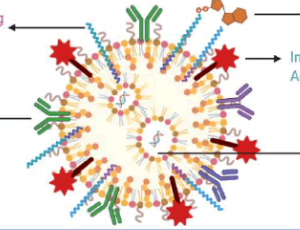
The Consideration of Endometriosis in Women with Persistent Gastrointestinal Symptoms and a Novel Neuromusculoskeletal Treatment Approach
Allyson Augusta Shrikhande
Endometriosis is a chronic, hormone-dependent, inflammatory disease, characterized by the presence and growth of endometrial tissue outside the uterine cavity and it is associated with chronic pelvic pain and infertility. Worldwide, approximately 176 million women between the ages of 15 and 49 are affected by endometriosis. Endometriosis is a complex disease that induces a chronic inflammatory process and can be challenging to treat. Chronic pelvic pain syndrome (CPPS) is defined as pelvic pain lasting greater than three to six months that is not solely related to menstruation, sexual activity or bowel movements.
Arch Gastroenterol Res, 2020, Volume 1, Issue 3, p66-72 | DOI: 10.33696/Gastroenterology.1.013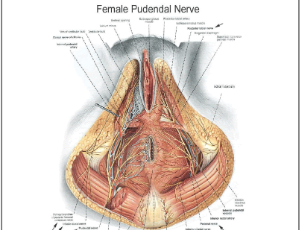
Paraduodenal Pancreatitis: Many faces of the Same Diagnostic Challenge
Giovanni Valentini, Monica Surace, Silvia Grosso, Annalisa Vernetto, Anna Maria Serra, Immacolata Andria, Dario Mazzucco
The term paraduodenal pancreatitis and groove pancreatitis are today used interchangeably, with all conditions having similar manifestations; they refer to an uncommon and still under-recognized form of recurrent or chronic pancreatitis that affects the so-called groove. The groove represents the potential space between the head of the pancreas, medially and the second part of the duodenum, laterally. It is bordered by the duodenal bulb and the third part of the duodenum in the superior and posteroinferior aspects, respectively.
Arch Gastroenterol Res, 2020, Volume 1, Issue 3, p73-82 | DOI: 10.33696/Gastroenterology.1.014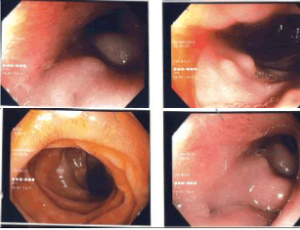
Survival Disparity Between Antiviral-Treated and Antiviral-Naïve Patients Who Develop Their First HBV-Associated Hepatocellular Carcinoma
Daniel Garrido, Peter Block, Selena Lin, Dina Halegoua-DeMarzio, Hie-Won Hann
Hepatitis B virus (HBV) infection is a public health problem, accounting for more than 257 million cases of chronic infection and a major cause of hepatocellular carcinoma (HCC) worldwide. With the vaccination and the advent of nucleos(t)ide analogues (NAs) as antiviral therapy, chronic HBV infection currently accounts for approximately 50% of HCC cases worldwide, a significant decrease from >80% in the 1980’s. The reduced incidence of HBV-related HCC (HBV-HCC) with NAs with lamivudine, entecavir, and tenofovir disoproxil fumarate is well documented.
Arch Gastroenterol Res, 2021, Volume 2, Issue 3, p86-94 | DOI: 10.33696/Gastroenterology.2.033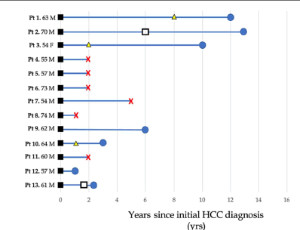
Are We Close to Achieving a HBV Cure? Risk for Hepatocellular Carcinoma Persists Despite Long-term HBV Suppression: An Update on Our Experience
Tina Boortalary, Brianna J Shinn, Robert M Coben, Mitchell I Conn, Jorge Prieto, Howard Kroop, Anthony J DiMarino, Hie-Won Hann
Since the discovery of the hepatitis B virus (HBV) by Blumberg et al., great progress has been made in understanding the pathogenesis of the virus and its role in hepatocellular carcinoma (HCC). It is estimated that hepatitis B is responsible for about 50% of the HCC cases worldwide. Because of geographic variations in HBV incidence, the burden of HBV-related HCC (HBV-HCC) is highest in endemic areas such as Asian-Pacific and sub- Saharan Africa and lowest in the United States and the West.
Arch Gastroenterol Res, 2020, Volume 1, Issue 4, p105-110 | DOI: 10.33696/Gastroenterology.1.018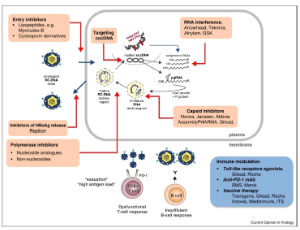
About Scientific Archives
Scientific Archives is a global publisher initiated with the mission of ensuring equal opportunity for accessing science to research community all over the world. Spreading research findings with great relevance to all channels without any barrier is our goal. We want to overcome the challenges of Open Access with ensured quality and transparency.
